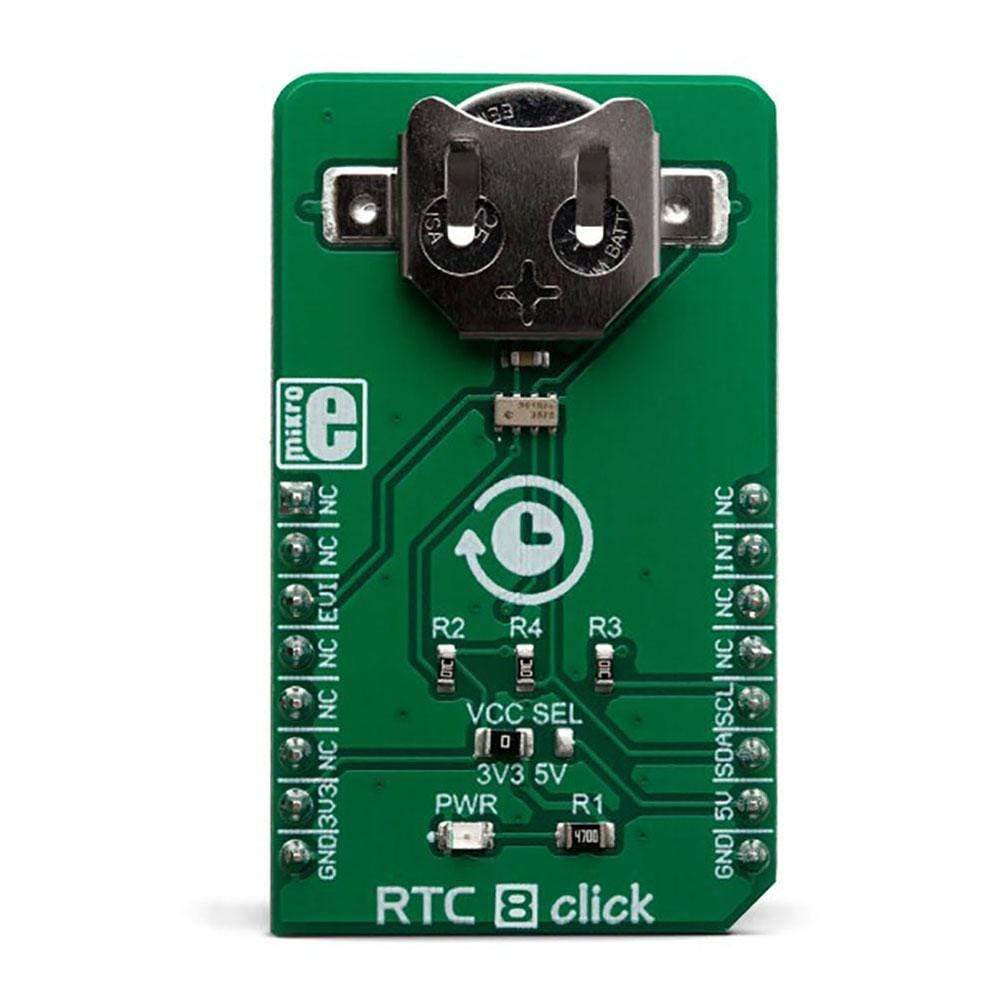



Key Features
Overview
The RTC 8 Click Board™ is a real-time clock module that has an extremely low power consumption, allowing it to be used with a single button cell battery, for an extended period of time. The RV-3028-C7 module built on the RTC 8 Click Board™ is able to output the time in the standard format, as well as in the 32-bit UNIX format. Integrated, factory calibrated crystal operating at 32.768 kHz ensures a very low time deviation.
The compensation and offset data are stored within the internal non-volatile memory. There is also a possibility to password-protect the configuration parameters. An advanced interrupt feature allows many different uses such as alarm function, countdown timer function, external event detection function with time stamp and much more.
Downloads
Le RTC 8 Click Board™ est un module d'horloge en temps réel qui présente une consommation d'énergie extrêmement faible, ce qui lui permet d'être utilisé avec une seule pile bouton, pendant une période prolongée. Le module RV-3028-C7 construit sur le RTC 8 Click Board™ est capable de fournir l'heure au format standard, ainsi qu'au format UNIX 32 bits. Le quartz intégré et calibré en usine fonctionnant à 32,768 kHz garantit un très faible écart de temps.
Les données de compensation et de décalage sont stockées dans la mémoire interne non volatile. Il est également possible de protéger les paramètres de configuration par mot de passe. Une fonction d'interruption avancée permet de nombreuses utilisations différentes telles que la fonction d'alarme, la fonction de compte à rebours, la fonction de détection d'événements externes avec horodatage et bien plus encore.
| General Information | |
|---|---|
Part Number (SKU) |
MIKROE-3456
|
Manufacturer |
|
| Physical and Mechanical | |
Weight |
0.02 kg
|
| Other | |
Country of Origin |
|
HS Code Customs Tariff code
|
|
EAN |
8606018714995
|
Warranty |
|
Frequently Asked Questions
Have a Question?
Be the first to ask a question about this.




